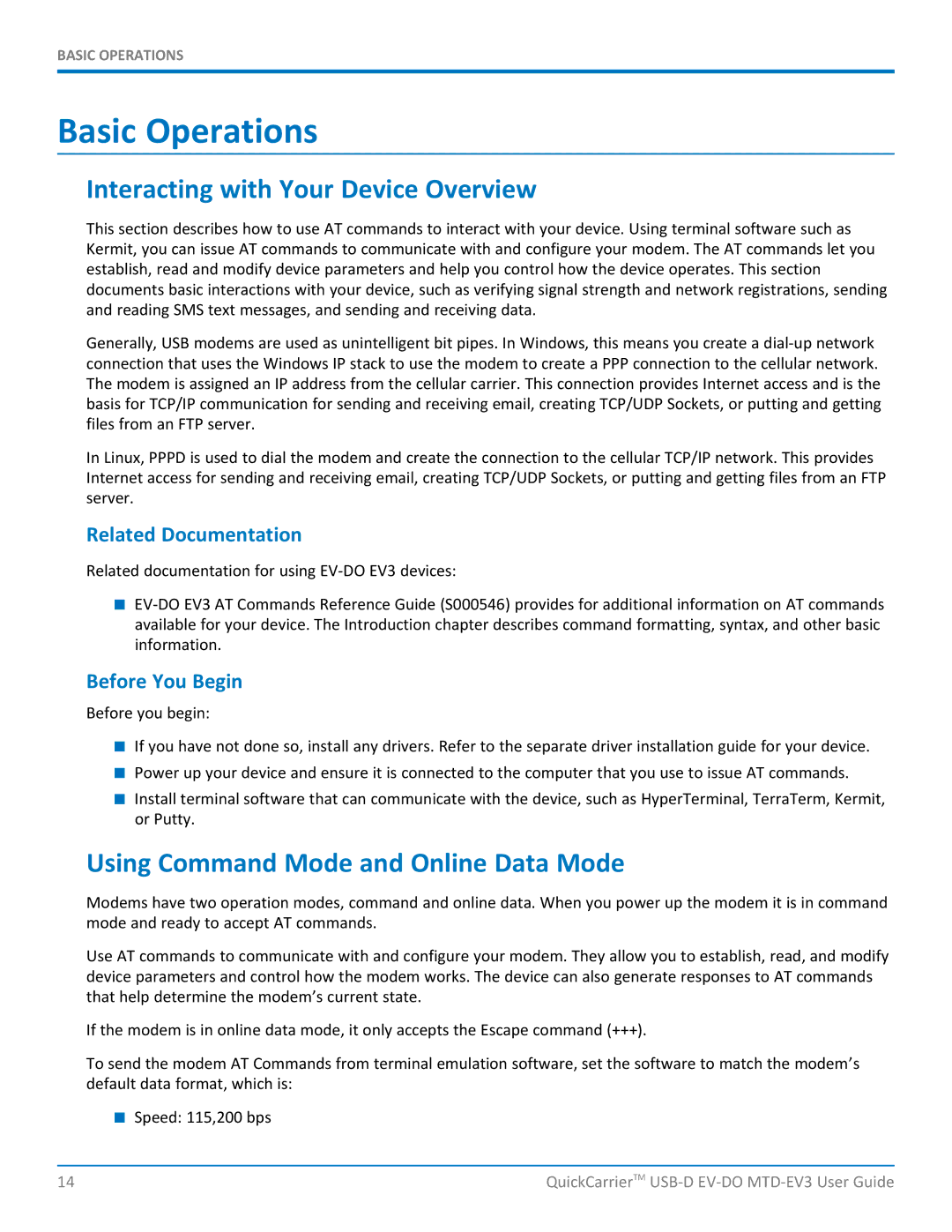
BASIC OPERATIONS
Basic Operations
Interacting with Your Device Overview
This section describes how to use AT commands to interact with your device. Using terminal software such as Kermit, you can issue AT commands to communicate with and configure your modem. The AT commands let you establish, read and modify device parameters and help you control how the device operates. This section documents basic interactions with your device, such as verifying signal strength and network registrations, sending and reading SMS text messages, and sending and receiving data.
Generally, USB modems are used as unintelligent bit pipes. In Windows, this means you create a
In Linux, PPPD is used to dial the modem and create the connection to the cellular TCP/IP network. This provides Internet access for sending and receiving email, creating TCP/UDP Sockets, or putting and getting files from an FTP server.
Related Documentation
Related documentation for using
■
Before You Begin
Before you begin:
■If you have not done so, install any drivers. Refer to the separate driver installation guide for your device.
■Power up your device and ensure it is connected to the computer that you use to issue AT commands.
■Install terminal software that can communicate with the device, such as HyperTerminal, TerraTerm, Kermit, or Putty.
Using Command Mode and Online Data Mode
Modems have two operation modes, command and online data. When you power up the modem it is in command mode and ready to accept AT commands.
Use AT commands to communicate with and configure your modem. They allow you to establish, read, and modify device parameters and control how the modem works. The device can also generate responses to AT commands that help determine the modem’s current state.
If the modem is in online data mode, it only accepts the Escape command (+++).
To send the modem AT Commands from terminal emulation software, set the software to match the modem’s default data format, which is:
■Speed: 115,200 bps
14 | QuickCarrierTM |
